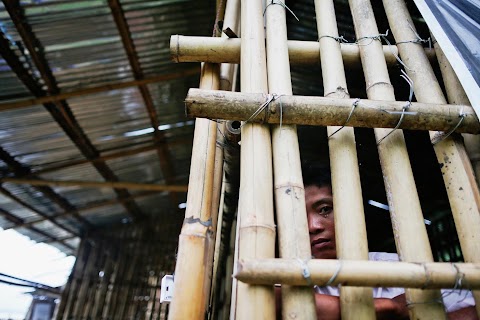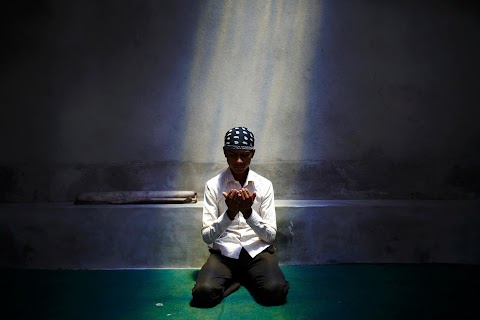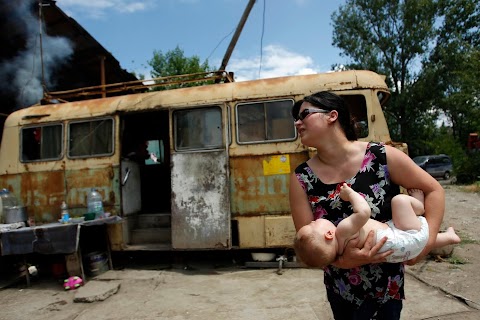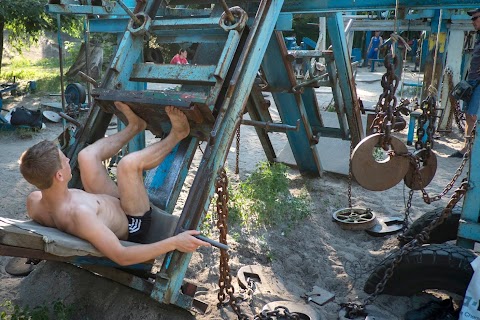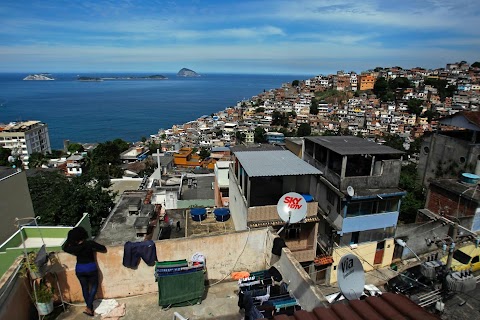
Slumdog gringos
 Pilar Olivares
Pilar Olivares
Life is changing in the notorious favelas of Rio de Janeiro. Five years after the first “Police Pacifying Units” were installed in the slums to claw back territory from gangs, many favela areas have become safer and real estate there is appreciating in value.
As owners start to reopen apartments that were formerly abandoned, "gringos" – the term that Brazilians use for any foreigners – are among the most sought-after tenants.

Italian artist Mara Zanetti makes the steep journey home in Rio's notorious Rocinha favela, where she pays $250 a month for a small apartment that she shares with her daughter. The neighbourhood is still dangerous, with a crack ally not far from Zanetti’s home, but it is nevertheless calmer than once was.
For many foreigners with low incomes, the changing slums are the only affordable housing option as the rest of Rio's real estate has soared in price over the last decade of economic boom.
Slideshow

French student Melodie Valerio looks out at a spectacular view over the city from the window of her rented room in the Pereira da Silva slum.

Italian artist Mara Zanetti walks her daughter Maya to school in the Rocinha favela.

Zanetti rides on the back of a motorcycle-taxi near her apartment.

She grins as a friend kisses her hand at a shop not far from her home.

Russian attorney Ekaterina Orudzheva and her Chilean boyfriend Marco Hermosilla walk past neighbours in the Vidigal slum, where they live.

Ekaterina buys bread at a local market.

She climbs up to her rented apartment with her shopping.

She leans against the wall at her home in the Vidigal slum.

British musician Tom Ashe teaches music to girls from different Rio favelas.

Ashe spends time with his students near the house that he rents out in the Pereira da Silva slum.

He poses for a portrait while playing the trumpet at home, on a ledge overlooking the city.
"This city is expensive, and it’s far from easy to get by without a stable job."
One day I decided to check out rumours that there were gringos living in the famous but feared favelas of Rio.
I went to the Vidigal favela and asked residents if they knew any foreigners living there. “This place has been invaded by gringos,” they said. “Look around a while and you’ll see a parade of them, even Peruvians, Ecuadorians, from everywhere.”
Although the term gringo was originally coined in Mexico to refer to Americans, here it refers to any foreigner, even myself – a gringa from Peru.
In Vidigal I met Ekaterina, an attorney from Russia who is living in the favela with her Chilean boyfriend, Marcos. For her, being in Rio means lowering her standard of living and the status that she had in cities in Europe, where she lived before coming here. Now she is giving English classes while Marcos works as a street artist.
This city is expensive, and it’s far from easy to get by without a stable job. The only housing option for the couple was a favela, where you can rent a two-room apartment for about $200 a month. No other neighbourhood in Rio’s central or southern districts has anything close to this size available for so cheap.
Marcos is happy. He adapts to anything, while Ekaterina constantly complains. “I can’t stand the filth. I don’t like it when the people yell a lot. It sounds as if they were always fighting. I’ll never get used to this.”
It’s been five years since the first of the “Pacifying Police Units” (UPP) was installed in the favelas closest to the upscale neighbourhoods. Since then, much of the city’s real estate is now safer and has been appreciating in value as owners reopen apartments or dwellings that they had shuttered and abandoned. That means there’s a business opportunity, and gringos who live in Rio are the most sought-after tenants.
One person who has experienced the war against drug trafficking is Mara, an Italian artist who arrived in Rio seven years ago. Mara lives alone with her six-year-old daughter Maya in a small apartment costing $250 per month in the notorious Rocinha favela.
She says that when she hears gunshots she throws herself down to the ground and waits for it to end. Death can come at any time, whether walking the streets, waiting for a train, or standing inside your home. But although anything can still happen, however you look at it Rocinha is much calmer now than it was before.
The story of Tom is a little different from the others. Tom is a trumpet player from England who arrived in Rio five years ago to experience Brazil’s music. He found a small apartment belonging to a French expatriate, who rents it for $400. It’s high up near the hilltop of the Pareira da Silva favela, with an impressive view of Sugarloaf Mountain.
Tom knows that the money he pays could be used to rent a room in Rio’s center, but he says his reason for being in a favela is not just economic. He likes to live with the slum dwellers to learn about the culture and roots behind Brazilian music.
Tom is well liked by his neighbours, as one of the few gringos who mixes with others in the community. When I accompanied him to look for a friend who lives down the hill we walked along streets so dark that I felt it too unsafe to walk with a camera. But Tom assured me in his relaxed English accent, “It’s very safe here, nothing will happen.”
Tom says that in Rio he has a more active social life than in London, participating in samba events where he plays with others musicians. He has close friends in the favela. “Rio is an excellent place for a musician,” he said.
His only worry is his ability to support a future family. He wouldn’t think of sending kids to a public school or a public hospital. The cost of living and private services like education and health is so high that Tom concludes: “To live a comfortable life in Brazil you have to be rich.”



